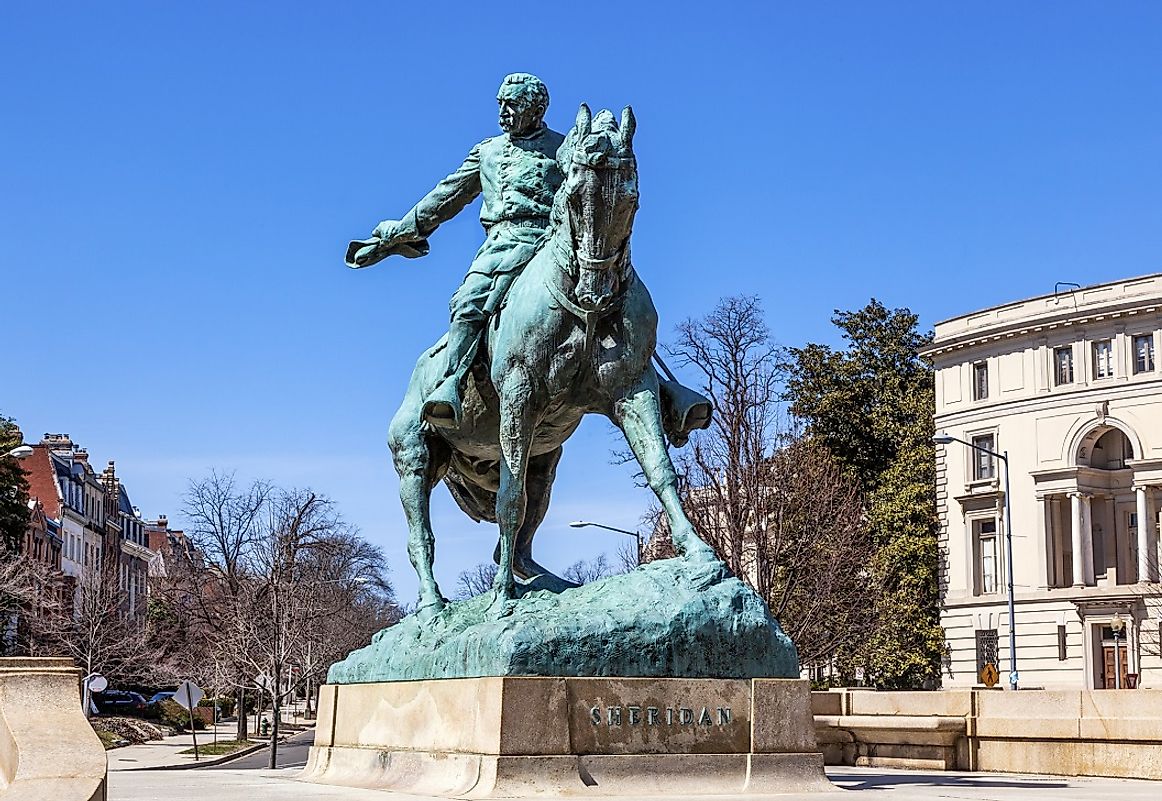The Battle of Cedar Creek: The American Civil War

5. Background
The battle of Cedar Creek was fought on October 19th, 1864. It is also known as the Battle of Belle Grove, and was the climax battle of the Shenandoah Valley Campaign of 1864, which took place during the American Civil War. During the Civil War, the battle was between the Union (United States and the Confederacy (Confederate States of America, CSA). The Union consisted of the national government and the 23 free states and five border slave states that supported it, while the Confederacy was composed of 11 Southern slave-holding states which had seceded in the wake of Lincoln's elcetion and formed the Confederate States of America.
4. Makeup
The Shenandoah Valley was one of the most important geographic features of Virginia, and favored the Confederates. The Union wanted to control it to close the invasion route to the North and to deny the use of its supplies to guerrillas operating in the area. The Union army fielded at Cedar Creek was led by Major General Philip Sheridan, while Lieutenant General Jubal Early led an opposition Confederate Army. Sheridan's unit, known as the Union Army of the Shenandoah, consisted of 31,610 effective men and 90 artillery pieces. They faced Early's Confederate Army of the Valley, itself consisting of 21,102 effective men, supported by more than 40 artillery pieces.
3. Description
Major General Philip Sheridan led his Army of the Shenandoah for the destruction of the fertile Shenandoah Valley. The move was to destroy the source of food supply to the Confederate army. Afterwards, Sheridan camped his army north of Cedar Creek and travelled to Washington, D.C. for a military conference. Desperate for a victory, Lieutenant General Jubal Early and his exhausted army devised a daring plan to attack Sheridan. This consisted of an all-night march along the base of the Massanutten Mountain, including two river crossings. The dense fog in the early morning of October 19th helped the Confederate Army, which caught many Northern soldiers sleeping and unaware. They carried out an onslaught that overran the Union 8th Corps, and then the 19th Corps as well, and drove past the Belle Grove Plantation. The Union 6th Corps was able to offer stiffer resistance, but by 10:30 a.m. the stunned Union army was in full retreat. Sheridan heard about the battle on his way riding back from Winchester that morning. He rode fast to the battlefield, and rallied his weak soldiers along the way. His arrival motivated and reorganized his troops and, by 4:00pm, they were ready for a counterattack.
2. Outcome
Early’s men, who were already outnumbered, exhausted and unprepared for the attack, were completely shattered. The Union army was able to recapture all of the lost artillery (plus 24 of the Confederates' cannons) and over 1,200 Confederate prisoners. This ended Confederate resistance in the Valley. On the Union side of the conflict, the casualties of the battle numbered 5,764, including 569 killed, 3,425 wounded, and 1,770 missing. The Confederate army lost 320, while 1,540 were wounded and 1,050 missing, adding up to a total of 2,910 casualties.
1. Significance
The battle occurred just three weeks before the presidential election. The crushing of the Confederates gave the Northern states a boost and aided Abraham Lincoln’s reelection. Also, it earned Sheridan great fame and cemented his status in American history, and protected the U.S. national capital in nearby Washington, D.C. from Southern advances. The battle site is now preserved as the Cedar Creek and Belle Grove National Historic Park. The integrity of the park, which includes both public and private lands, is maintained by the National Trust for Historic Preservation in conjunction with the U.S. National Park Service.







